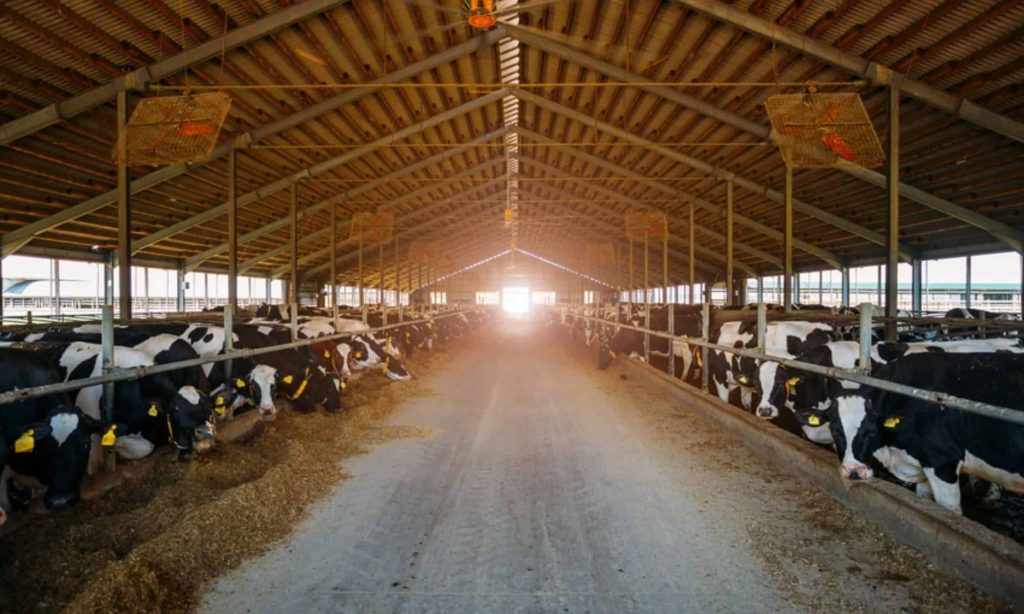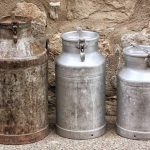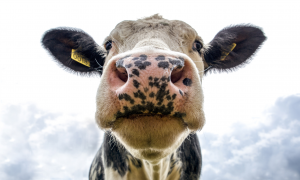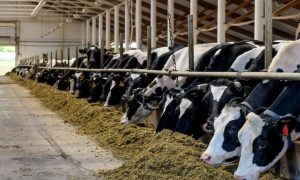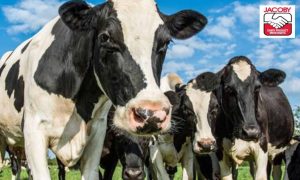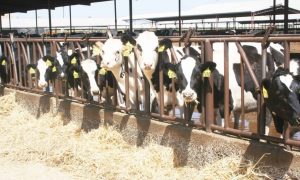
U.S. dairy production has changed substantially over the past two decades. Milk production has increased as has the number of dairy cows and the milk yield per cow. A new University of Illinois analysis shows how production gains in the past two decades are the result of markedly different growth strategies across regions and explores what these regional growth trends mean for future dairy production decisions.
Economists Jared Hutchins and Joe Janzen focused on the fifteen states with the most dairy cows and distinguished between “traditional” dairy states with small herd sizes and a long history of dairy production and “modern” dairy states with large herds where the dairy sector has only recently reached its current scale.
While each region comprises a roughly equal share of total U.S. milk production, Hutchins and Janzen said traditional and modern dairy states have grown in very different ways.
“Most production growth in traditional dairy states comes from rising milk yield. Modern dairy states have grown production by increasing both milk yield and the total number of cows,” they noted.
As U.S. dairy cow numbers have started to level off, it is possible that there are limits on how much the total U.S. herd can grow, the authors suggested.
“Constraints on the scale of dairy production may have hit dairy farms in traditional dairy states first, leading those farms to focus on growing yield through improvement in management and genetics. This trend may play out in modern dairy states in coming years.”
Findings showed that the locational contrast of larger versus smaller herds is stark. States with small herds are entirely in the Midwest and Northeast, while states in the West all have substantially larger herds with nearly all having an average herd size above 1,000 cows.

“Dairy farming has a long history in the Midwest and Northeast because dairy production tended to be located in cooler climates, whereas dairy farming in relatively hot and arid states is a more recent phenomenon,” Hutchins and Jenzen noted. As such, they term the small-herd, Midwest and Northeast dairy producing states as “traditional” and the large-herd, Western states as “modern”.
How are these two different milk-producing regions increasing production? The reported showed that until 2008, modern dairy states were adding cows at a rapid rate even as traditional dairy states were losing them. After 2008, however, this slowed considerably and, in some years, has shown small declines. Still, a growing number of cows have been a major reason for production growth in modern dairy states.
Cow numbers in traditional dairy states have been mostly stagnant, and in 2020, the number of cows in modern dairy states surpassed the number of cows in dairy states for the first time.
Milk yield trends
Milk yield (in pounds per cow) is the other component of production growth, according to Hutchins and Jenzen. Dairy farms may increase milk yield by adopting better management practices and/or purchasing improved genetics.
Throughout the study’s sample period, large-scale production in modern dairy states had higher milk yield than traditional states: 1,721 pounds per cow versus 1,473 in 2000. By 2022, the yield gap between modern and traditional states narrowed to less than 100 pounds: 2,070 pounds per cow versus 1,984 pounds per cow.
Hutchins and Jenzen said the change in relative yield growth happens to coincide with an increase in the genetic milk yield potential of dairy bulls due to the introduction of genomic testing.
“While traditional dairy states have not added as many cows as modern dairy states, they have kept pace with the West by increasing milk yield at a faster rate. Traditional state yields appear to be converging to that of the modern states, implying that they are either tapping into a new source of yield growth or simply catching up by adopting improvements of the modern dairy states.”
Declining farm numbers and herd size
The analysis also found that dairy regions have diverged in terms of changes in average herd size. All fifteen states have seen increases in average herd size since 2003, but dairy farm consolidation has led to faster growth in average herd size in traditional dairy states, the authors noted.
In traditional dairy states, however, herd size growth has been almost entirely driven by decreases in the number of farms. In fact, from 2014 to 2022, the number of farms dropped by 37% in traditional states and 26% in modern dairy states.
“Traditional dairy states have almost tripled their average herd size in twenty years while modern dairy state herd size is a little over double what it was in 2003. While herd size remains much larger in modern states than traditional ones, dairy farm consolidation in traditional states has shrunk the gap slightly over time,” Hutchins and Jenzen said.
Focus on productivity
What explains the divergence between traditional and modern dairy-producing regions in terms of cow numbers and milk yield? The report suggests one possibility is that traditional dairy states are investing less in growing their cow numbers and more in better management, enhanced milking technology, and more productive genetics. Additionally, it is possible that, due to zoning and environmental regulations, traditional dairy states are simply more limited in their ability to grow cow numbers.
“Having exhausted their ability to grow production through cow numbers, they are instead turning to improving yield. This mirrors a larger trend in U.S. crop production where output growth is driven mostly through productivity gains rather than putting more acres into production,” noted Hutchins and Jenzen.
In recent years, there has been heightened concern about the resiliency of dairy supply chains and even talk of supply management. Cow numbers have begun to level off, which the authors suggest may be due to uncertainty surrounding the ability and willingness of the supply chain to continue to accept the volume of milk that it does. It may also be that the total number of dairy cows in the country is reaching a long-run, stable level, they added.
Looking ahead, Hutchins and Jenzen said that if growth in the U.S. dairy herd does level off, modern dairy states may follow the lead of the traditional states and drive growth through yield improvement rather than more cows.
